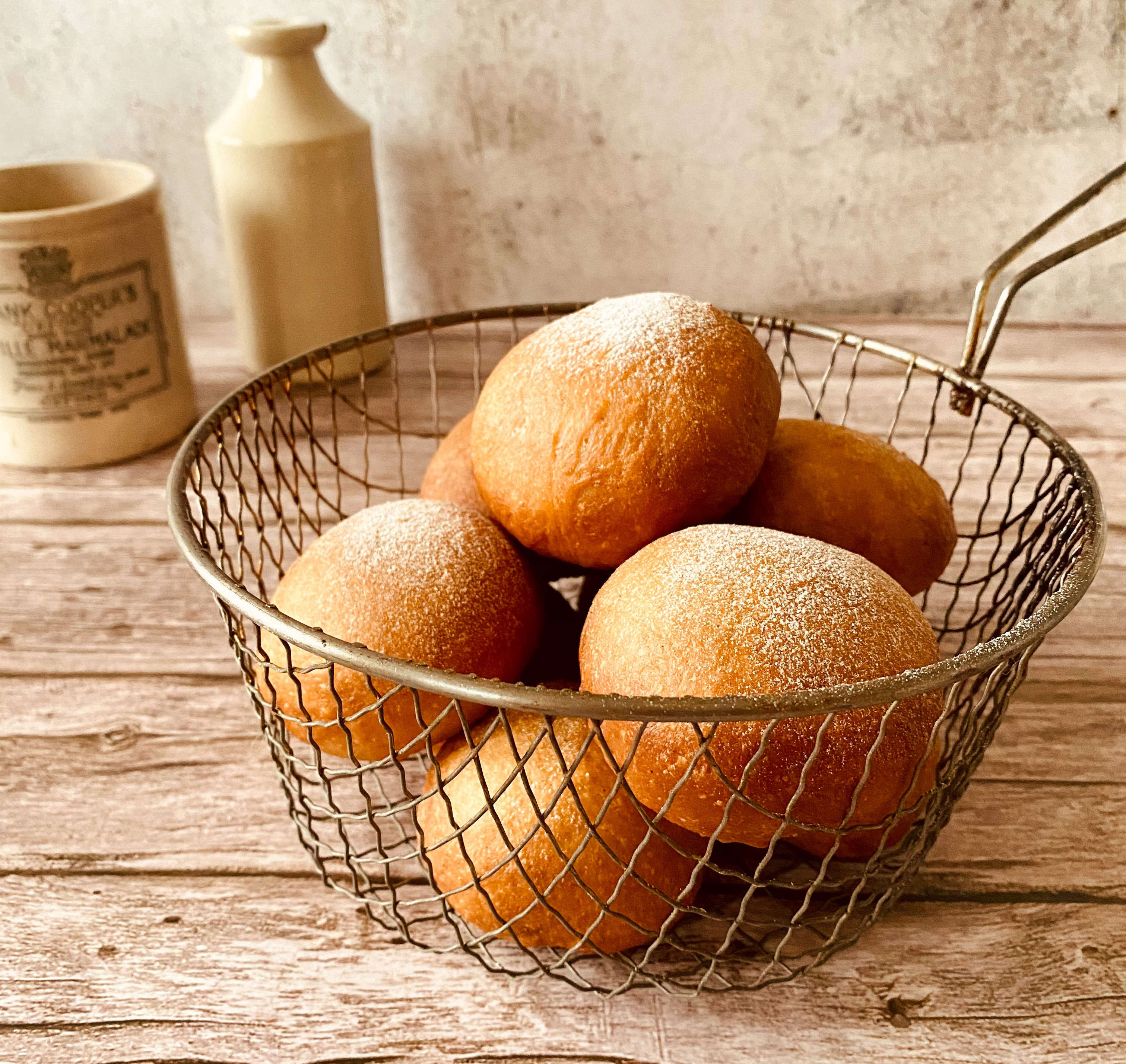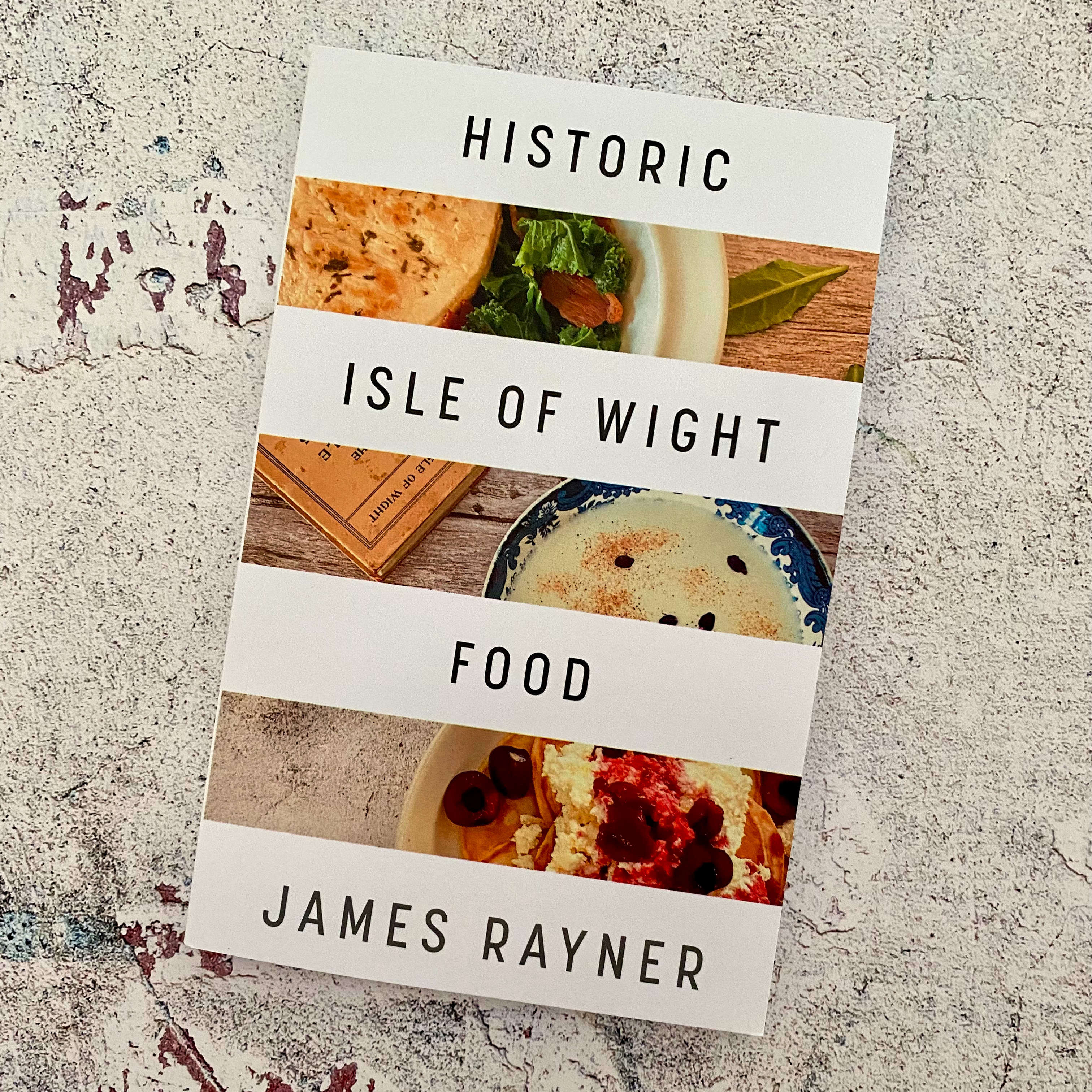
A new book which takes a tour of the history of Isle of Wight food — from foraged fruit wine to samphire and sand sprats — has been published by Isle of Wight author, James Rayner.
It explores how the Island’s landscape, traditions and heritage combined to create a distinctive and varied food culture and reveals the stories behind some of the Island’s most iconic food products such as the spicy, plum-filled Isle of Wight Doughnut and the local version of a creamy panna
cotta: junket. It unearths how wild garlic became named after the local Romani gypsy minority and how a local type of biscuit became reproduced in bakeries as far afield as Calcutta.
It concludes with a look at the wave of European chefs and hoteliers who changed the course of local food forever before exploring the edible wild plants, dialect terms and historic recipes that defined Island food, allowing this forgotten food culture to be revived once again.

James Rayner was born and brought up on the Isle of Wight. His background is in language and literature which he studied with the University of Iceland and the University of Malmö in Sweden. His first book, The Isle of Wight’s Missing Chapter was published in 2019 and focused on the Island’s forgotten Asian, African and Caribbean history.
James says: "Traditional Isle of Wight food seemed to disappear about 120 years ago, but it's definitely worth revitalising. I'd love to see Isle of Wight Doughnuts, Junket and Apple Stucklens being made here again. We're already renowned for our food, but bringing back our lost culinary
culture could help it become something truly extraordinary."

Historic Isle of Wight Food by James Rayner is available from shops across the Island, including The Garlic Farm, Medina Books in Cowes, It's About Thyme and Babushka Books in Shanklin, and Caffe Isola, The Little Nook, Island Traders and Waterstone's in Newport. It's also available to order online from wightoriginals.com.

 Kids' Zone: Make Your Own Playdough!
Kids' Zone: Make Your Own Playdough!
 Kids Zone: Spooky Spider's Webs
Kids Zone: Spooky Spider's Webs
 What to Watch in October 2024
What to Watch in October 2024
 Entertainment Guide: September 2024
Entertainment Guide: September 2024
 September Book Reviews: 6 of this month's best new reads
September Book Reviews: 6 of this month's best new reads
 August Authors: Four Books to Read on the Beach this Summer
August Authors: Four Books to Read on the Beach this Summer
 Britain’s Got Talent winner to play Dick Whittington in this year’s Pompey Panto
Britain’s Got Talent winner to play Dick Whittington in this year’s Pompey Panto
 A Walk Around Carisbrooke Castle
A Walk Around Carisbrooke Castle
 February Fiction to Enjoy this Month
February Fiction to Enjoy this Month
 The Wizard of Oz a 'Visual Feast'
The Wizard of Oz a 'Visual Feast'
 A Circular Walk to Woodside Beach
A Circular Walk to Woodside Beach
 Four Books to Tuck in to This New Year
Four Books to Tuck in to This New Year
 "Fabulous, Funny and Festive": Snow White Arrives at Mayflower Theatre
"Fabulous, Funny and Festive": Snow White Arrives at Mayflower Theatre
 Walking with Nordic Poles
Walking with Nordic Poles
 Chaotic Fun at This Year's Pompey Panto
Chaotic Fun at This Year's Pompey Panto
 An Interview with Southampton Panto Star Christopher Biggins
An Interview with Southampton Panto Star Christopher Biggins
 All Aboard as The Kings Theatre Portsmouth Launches 2023 Panto
All Aboard as The Kings Theatre Portsmouth Launches 2023 Panto
 October Puzzle Solutions
October Puzzle Solutions
 Walking the Isle of Wight: Wroxall Woodland
Walking the Isle of Wight: Wroxall Woodland
 Four Books to Read on the Beach
Four Books to Read on the Beach
Comments
Add a comment